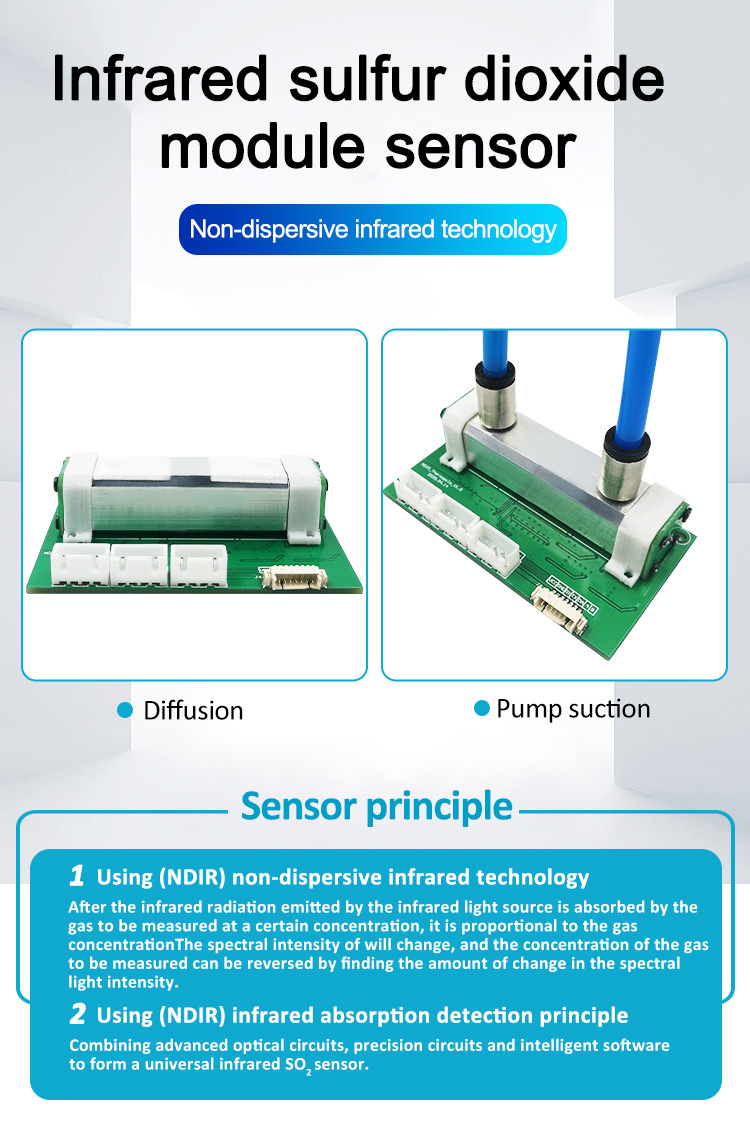Indoor air quality is a critical factor for maintaining a healthy and comfortable living environment. Poor air quality can lead to various health issues, including respiratory problems and allergies. Fortunately, advancements in gas sensor technology have paved the way for effective monitoring and improvement of indoor air quality. In this article, we will explore how gas sensor technology enhances indoor air quality, its applications in various settings, and the benefits it brings to individuals and communities.
Understanding Gas Sensor Technology:
Gas sensors are devices designed to detect and measure the presence and concentration of gases in the air. These sensors operate based on different principles such as electrochemical, semiconductor, and infrared absorption. They can detect a wide range of gases, including carbon dioxide (CO2), carbon monoxide (CO), volatile organic compounds (VOCs), and nitrogen dioxide (NO2).
Applications of Gas Sensors in Indoor Air Quality Monitoring:
a. Carbon Dioxide (CO2) Monitoring: Elevated CO2 levels can indicate poor ventilation or insufficient fresh air supply. Gas sensors are used to monitor CO2 levels in buildings, classrooms, offices, and other enclosed spaces to ensure adequate ventilation and occupant comfort.
b. Volatile Organic Compounds (VOCs) Detection: VOCs are released by various household products, such as cleaning agents, paints, adhesives, and furnishings. Long-term exposure to high VOC levels can cause health issues. Gas sensors detect and measure VOC concentrations, enabling early identification of potential indoor pollution sources.
c. Detection of Combustible Gases: Gas sensors play a crucial role in monitoring combustible gases like methane (CH4) and propane (C3H8). These sensors are used in kitchens, boiler rooms, and areas with gas-powered appliances to ensure safe conditions and prevent fire hazards.
d. Indoor Air Quality Indexing: Gas sensors are often integrated into indoor air quality monitoring systems that provide comprehensive data on multiple pollutants. These systems generate real-time reports and index readings, allowing users to assess the overall air quality and take necessary measures for improvement.
Benefits of Gas Sensor Technology in Enhancing Indoor Air Quality:
a. Early Detection and Prevention: Gas sensors provide real-time monitoring, enabling the early detection of harmful gases and pollutants. This allows for prompt action to be taken to address the sources of contamination and improve air quality.
b. Improved Ventilation Efficiency: Gas sensors help optimize ventilation systems by monitoring CO2 levels. This data allows building managers to adjust airflow rates and maintain an appropriate ventilation balance, ensuring occupant comfort and well-being.
c. Health and Well-being: By monitoring VOC levels, gas sensors contribute to reducing long-term health risks associated with exposure to these chemicals. This is particularly important for individuals with respiratory conditions, allergies, or chemical sensitivities.
d. Energy Efficiency: Gas sensors aid in optimizing energy consumption by providing data on occupancy patterns and allowing for demand-controlled ventilation. This helps reduce unnecessary energy usage while ensuring a comfortable and healthy indoor environment.
e. Smart Building Integration: Gas sensors can be integrated into smart building systems, allowing for automated responses such as adjusting HVAC systems, activating air purifiers, or alerting occupants and building managers in case of hazardous gas levels.
Future Trends and Considerations:
As technology continues to advance, gas sensor technology is expected to become even more accurate, efficient, and affordable. Additionally, the integration of gas sensors with Internet of Things (IoT) platforms and artificial intelligence will enable more sophisticated data analysis and predictive capabilities. However, it's crucial to consider proper calibration, regular maintenance, and data privacy concerns to ensure the optimal performance and reliability of gas sensor technology.
Conclusion:
Gas sensor technology represents a significant advancement in enhancing indoor air quality and promoting healthier living environments. Through the continuous monitoring and measurement of various gases, these sensors help identify potential risks, improve ventilation, and optimize energy efficiency. By leveraging the benefits of gas sensor technology, individuals, businesses, and communities can work towards creating safer, more comfortable, and healthier indoor spaces for everyone.
 : +86 155 8830 2704
: +86 155 8830 2704 : jxdziot@gmail.com
: jxdziot@gmail.com
